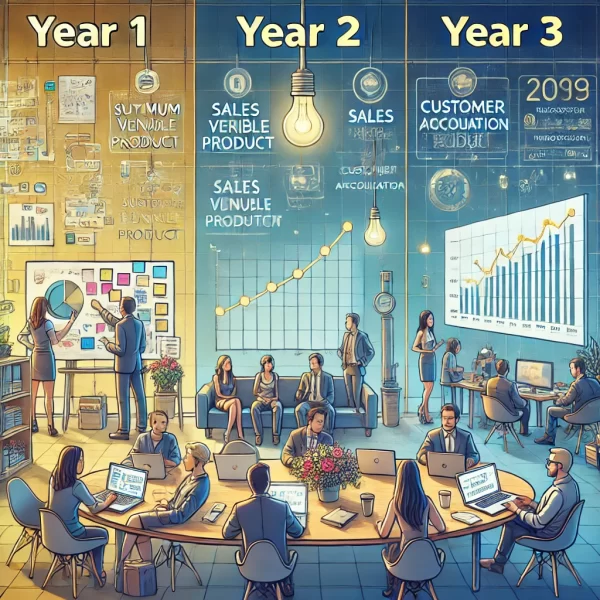Starting a Startup to Serve Starbase: A Guide for Founders
The Space Race 2.0: Startup Opportunities Abound
The space exploration industry is booming, with SpaceX’s Starbase at the forefront of groundbreaking innovations. For aspiring entrepreneurs, this presents a unique opportunity to build startups that cater to the needs of Starbase. Here’s a detailed guide on how to establish and scale a startup to serve this thriving spaceport.
Understanding Starbase’s Needs
Before launching your startup, it’s vital to identify the specific needs of Starbase. The facility is not just a launch site; it’s a hub for cutting-edge space technology. Key areas ripe for innovation include:
1. Rocket Development and Manufacturing:
- Advanced materials and manufacturing processes for Starship components.
- Robotics and automation for assembly and testing.
- 3D printing and additive manufacturing technologies, expected to grow at a CAGR of 20.3% by 2030, reaching $51 billion globally.
2. Space Infrastructure:
- Lunar and Martian habitats and infrastructure to support human settlement.
- Space-based solar power generation, projected to become a $2.3 billion market by 2035.
- Resource utilization and in-situ resource utilization (ISRU) technologies to enable self-sufficiency in space.
3. Launch and Landing Operations:
- Reusable launch vehicle technologies, a cornerstone of SpaceX’s strategy.
- Precision landing systems for consistent recovery.
- Launch site infrastructure and operations to support high-frequency launches.
Identifying a Niche and Developing a Solution
The key to success lies in focusing on a specific problem within Starbase’s ecosystem. Examples of potential niches include:
- Heat Shield Materials: Develop advanced ceramics or composites for Starship’s heat shield to improve durability and reduce costs.
- Autonomous Assembly Systems: Create robotic solutions for tasks like welding and inspection, addressing labor shortages and improving precision.
- Life Support Systems: Design compact, energy-efficient life support solutions for lunar habitats.
Building a Strong Team
A startup’s success depends on assembling a diverse team with complementary skills. Essential areas of expertise include:
- Aerospace Engineering: To tackle technical challenges and innovate.
- Business Development: To secure contracts and build relationships with Starbase.
- Marketing and Communications: To attract investors and establish your brand.
- Finance and Operations: To manage budgets and ensure smooth operations.
The demand for aerospace engineers is projected to grow by 8% by 2031, with an average annual salary of $122,270 in the U.S. This highlights the need for competitive hiring strategies.
Securing Funding and Resources
Funding is a critical component of any startup. Consider these options:
- Venture Capital: The global space venture capital market surpassed $10 billion in 2023.
- Angel Investors: Seek out high-net-worth individuals passionate about space exploration.
- Government Grants: Programs like NASA’s SBIR (Small Business Innovation Research) provide funding for space-related innovations.
Building Relationships with Starbase
Collaboration with Starbase is essential for success. Here’s how to foster strong relationships:
- Attend Industry Events: Engage with key players at conferences like the Space Symposium or International Astronautical Congress.
- Submit Proposals: Respond to RFPs (Requests for Proposals) issued by Starbase.
- Showcase Capabilities: Demonstrate your technology through prototypes, pilot projects, and proof-of-concept models.
Key Considerations for Economic Viability
To thrive in Starbase’s ecosystem, your solutions must align with their priorities:
- Cost-effectiveness: Offer significant cost advantages to outshine competitors.
- Scalability: Ensure your solutions can scale to meet growing demands.
- Time-to-market: Accelerate your development cycle to align with Starbase’s timelines.
Identifying a Niche for Your Startup Serving Starbase
Finding the right niche is critical. Here’s a step-by-step process:
1. Conduct Thorough Research:
- Starbase’s Public Information: Analyze SpaceX’s announcements and reports.
- Industry Reports: Explore market research on aerospace trends.
- Competitive Analysis: Understand existing suppliers’ strengths and weaknesses.
2. Brainstorm and Ideate:
- Focus on specific problems.
- Leverage your team’s unique skills.
- Think disruptively to challenge conventional approaches.
3. Evaluate Potential Niches:
- Assess market size and growth potential.
- Analyze the competitive landscape.
- Evaluate technical feasibility and economic viability.
4. Validate Your Idea:
- Customer Interviews: Gather feedback directly from Starbase stakeholders.
- Prototyping: Build a prototype to demonstrate feasibility.
- Pilot Projects: Test your solution in a real-world environment.
Let’s Dive Deeper: Niche Exploration for Your Starbase-Focused Startup
We’ve discussed some general niches. Now, let’s explore a few in more detail and brainstorm some ideas based on your specific interests and expertise.
1. Advanced Materials for Starship’s Heat Shield
- Challenge: Starship’s re-entry generates immense heat. Finding a material that can withstand these temperatures while remaining lightweight is crucial.
- Potential Solutions:
- Novel Ceramics: Research and develop new ceramic composites with superior thermal properties.
- Aerogels: Explore the use of aerogels, known for their exceptional thermal insulation properties.
- Bio-inspired Materials: Investigate materials inspired by nature, such as abalone shells, which exhibit remarkable heat resistance.
2. Robotics for Autonomous Assembly of Starship Components
- Challenge: Starship’s massive size and complex assembly process require significant manual labor. Automation can improve efficiency and reduce costs.
- Potential Solutions:
- Collaborative Robots (Cobots): Develop cobots that can work alongside human workers to perform tasks such as welding, riveting, and inspection.
- AI-Powered Assembly Systems: Create AI-powered systems that can optimize assembly processes, predict potential problems, and adapt to changing conditions.
- Autonomous Inspection Drones: Utilize drones equipped with sensors and AI to inspect components for defects, ensuring quality control.
3. Compact, Efficient Life Support Systems for Lunar Habitats
- Challenge: Providing a sustainable and comfortable living environment on the Moon requires efficient life support systems that can recycle resources and minimize waste.
- Potential Solutions:
- Advanced Water Recovery Systems: Develop systems that can efficiently recycle water from various sources, including sweat, urine, and even the lunar regolith.
- Closed-Loop Ecological Systems: Create self-sustaining ecosystems that can produce food, oxygen, and other essential resources using minimal inputs.
- 3D-Printed Habitats: Utilize 3D printing technology to construct habitats from lunar regolith, reducing the need to transport materials from Earth.
Innovative Startup Ideas for Starbase
1. Space Logistics and Transportation:
- On-Demand Rocket Refueling: Develop a system for rapidly refueling rockets on the launchpad, reducing turnaround times and increasing launch frequency.
- Space Debris Mitigation: Create technologies for capturing and removing space debris, ensuring the safety and sustainability of space operations.
- Point-to-Point Space Transportation: Develop reusable spacecraft for rapid and affordable transportation of cargo and potentially even passengers between Earth and other destinations.
2. Advanced Propulsion Systems:
- Nuclear Thermal Propulsion: Research and develop nuclear thermal rocket engines for deep space missions, offering significantly higher specific impulse than chemical rockets.
- Solar Sail Technology: Advance solar sail technology for interplanetary travel, leveraging the momentum of sunlight for propulsion.
- Antimatter Propulsion: Explore the feasibility and development of antimatter propulsion systems, offering potentially revolutionary levels of efficiency.
3. Space-Based Infrastructure:
- Space-Based Solar Power: Develop and deploy large-scale solar power stations in space to transmit clean energy to Earth.
- Lunar Mining and Processing: Establish infrastructure for mining and processing resources on the Moon, such as water ice and rare earth elements.
- Space-Based Manufacturing: Develop and deploy manufacturing facilities in space, leveraging the unique environment for producing high-quality materials and complex structures.
4. Artificial Intelligence and Machine Learning:
- AI-Powered Mission Planning and Optimization: Develop AI algorithms for optimizing mission trajectories, managing resources, and mitigating risks.
- Autonomous Spacecraft Operations: Create AI-powered systems for autonomous spacecraft navigation, docking, and maintenance.
- Predictive Maintenance for Spacecraft Components: Utilize machine learning to predict and prevent equipment failures, improving spacecraft reliability and reducing maintenance costs.
5. Human Factors and Space Medicine:
- Advanced Life Support Systems: Develop compact and efficient life support systems for long-duration space missions, ensuring the health and well-being of astronauts.
- Countermeasures for Space Radiation: Research and develop effective countermeasures for protecting astronauts from the harmful effects of space radiation.
- Virtual and Augmented Reality Training for Space Missions: Utilize VR/AR technologies to enhance astronaut training and mission simulations.
Diving Deeper into Space-Based Manufacturing
Space-based manufacturing offers a unique set of advantages, including:
- Microgravity: Allows for the creation of materials with superior properties, such as larger crystals for electronics and pharmaceuticals.
- Vacuum Environment: Enables the production of materials with fewer impurities and defects.
- Abundant Solar Energy: Provides a constant source of clean energy for manufacturing processes.
Potential Applications for Space-Based Manufacturing:
-
Advanced Materials:
- High-Purity Crystals: Growing large, perfect crystals for semiconductors, optics, and medical devices.
- Stronger, Lighter Materials: Producing advanced alloys and composites with superior strength-to-weight ratios for aerospace applications.
- Novel Pharmaceuticals: Manufacturing pharmaceuticals with unique properties not achievable on Earth.
-
Space Infrastructure:
- Large-Scale Structures: Building large space structures, such as solar power satellites and space habitats, using in-situ resources.
- Spacecraft Components: Manufacturing complex spacecraft components, such as solar panels, antennas, and propulsion systems.
- On-Orbit Servicing: Providing on-orbit servicing and repair capabilities for spacecraft.
-
Earth-Based Applications:
- High-Value Manufacturing: Producing high-value goods, such as precision optics, medical implants, and advanced electronics, in a microgravity environment.
- Research and Development: Conducting materials science research and developing new manufacturing processes in space.
Challenges and Considerations:
- High Costs: Launching and operating manufacturing facilities in space is extremely expensive.
- Technical Complexity: Developing and implementing complex manufacturing processes in a microgravity environment presents significant engineering challenges.
- Logistics and Supply Chain: Establishing efficient logistics and supply chains for transporting materials to and from space.
Opportunities for Innovation:
- Autonomous Manufacturing: Developing fully autonomous manufacturing systems that can operate with minimal human intervention.
- Additive Manufacturing: Utilizing 3D printing and other additive manufacturing techniques for in-space production.
- In-Situ Resource Utilization: Utilizing resources found in space, such as lunar regolith and asteroids, as raw materials for manufacturing.
-
High Costs:
- Launch Costs: Transporting equipment, raw materials, and finished products to and from space remains incredibly expensive.
- Development Costs: Research and development of space-based manufacturing technologies and infrastructure require significant upfront investment.
- Maintenance and Operations: Operating and maintaining manufacturing facilities in space presents unique logistical and technical challenges, increasing operational costs.
-
Technical Complexity:
- Microgravity Effects: Understanding and mitigating the effects of microgravity on manufacturing processes is crucial.
- Fluid Dynamics: Fluids behave differently in microgravity, affecting processes like mixing, casting, and welding.
- Material Behavior: Material properties can change in microgravity, impacting their performance and reliability.
- Remote Operations: Operating and maintaining complex machinery remotely in space requires robust telecommunications and robotics technologies.
- Radiation and Extreme Temperatures: Space environments are subject to harsh conditions like radiation and extreme temperatures, which can damage equipment and materials.
- Microgravity Effects: Understanding and mitigating the effects of microgravity on manufacturing processes is crucial.
-
Logistics and Supply Chain:
- Resupply: Ensuring a continuous and reliable supply of raw materials, spare parts, and other essential components to space-based facilities is a major logistical challenge.
- Product Return: Developing efficient and cost-effective methods for returning finished products from space to Earth.
- Safety and Reliability: Ensuring the safe and reliable operation of space-based manufacturing facilities, minimizing the risk of accidents and equipment failures.
Addressing these challenges will require significant advancements in several key areas:
- Space Transportation: Developing more affordable and reliable launch vehicles and reusable spacecraft.
- Robotics and Automation: Enhancing robotics and automation technologies for remote operations and maintenance.
- Materials Science: Conducting extensive research to understand the behavior of materials in microgravity and develop new materials specifically for space-based manufacturing.
- Telecommunications: Improving space-based communication technologies to enable high-bandwidth, low-latency communication with Earth.
Additional Tips for Success
- Embrace Open Innovation: Collaborate with other startups, universities, and research institutions to pool resources and knowledge.
- Stay Informed: Regularly follow updates on space technology and Starbase’s evolving goals. Space technology is projected to grow at a CAGR of 5.6%, reaching $558 billion by 2030.
- Be Patient and Persistent: The path to success in aerospace is challenging but rewarding. Perseverance is key.
Remember, the key is to find a problem that you’re passionate about solving and that aligns with Starbase’s needs. By focusing on a specific challenge and developing a unique and innovative solution, you can increase your chances of success in this exciting and rapidly evolving field.
Conclusion
Building a startup to serve Starbase is an exciting venture filled with opportunities. By understanding Starbase’s needs, identifying a specific niche, and building a strong team, you can position your startup for success. Secure funding, foster relationships, and focus on scalability and cost-effectiveness to stand out in this competitive field. With patience, persistence, and innovation, your startup could play a pivotal role in the future of space exploration.
Disclaimer: This article provides general information and insights into potential opportunities within the space startup ecosystem. It is not intended to be financial, legal, or professional advice. The information presented should not be considered an endorsement or guarantee of success for any particular startup or investment.







